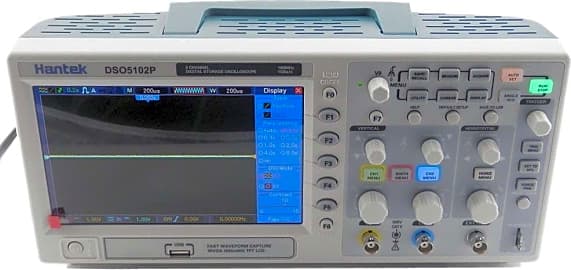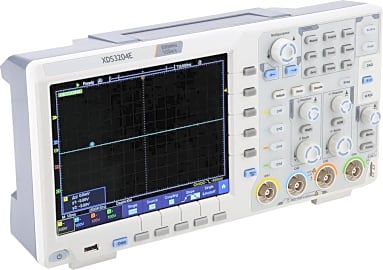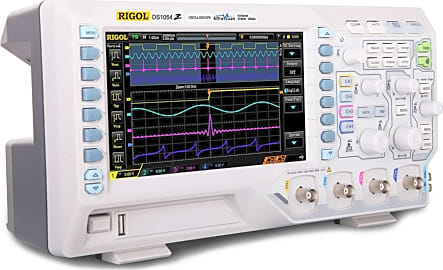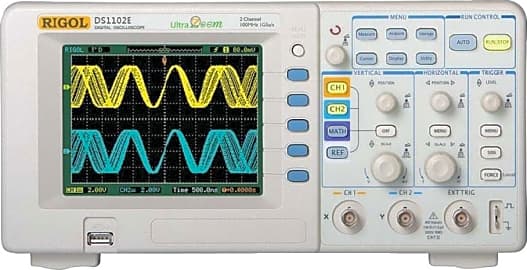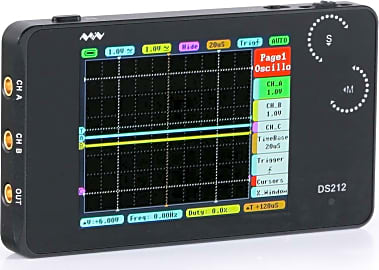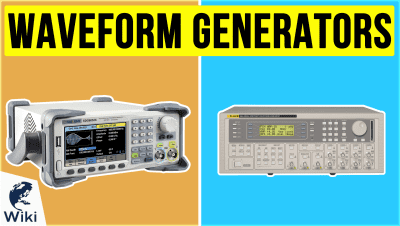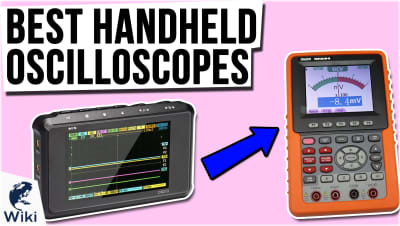The 10 Best Digital Oscilloscopes

This wiki has been updated 35 times since it was first published in December of 2016. Accurate testing of electrical currents can be critical for establishing the safety and efficiency of various types of machines and circuitry. Whether you suspect your car's ignition system is not working as it should or you fear your home is suffering from regular power surges, the right digital oscilloscope will enable you to create an accurate record of voltage patterns over time. When users buy our independently chosen editorial picks, we may earn commissions to help fund the Wiki.
Editor's Notes
September 03, 2020:
While the big names in this sector continue to rely on their standard bearers to get the job done, hobbyist electricians, inventors, and DIY enthusiasts are finding that more portable options are better suited to their work. With that in mind, we eliminated the Tektronix TBS1052B from our previous list, which had a nice, big screen, but was a bit lacking in build quality, and replaced it with the extremely portable SainSmart DSO212 Pocket Size. That model relies heavily on a touchscreen for its interface, which makes cursor placement a breeze, but also offers some control wheels so you can navigate and make adjustments without blocking the screen while you do so.
Of course, pro users who need to be sure of a given circuit's integrity are going to want to rely on those more traditional scopes like the Siglent Technologies SDS1104X-E or the GW Instek GDS-2304A. That GW model is one of the most capable you're going to find outside of the massive offering from Keysight in our special honors section, though it is a lot pricier than much of the competition.
Also in our special honors section is a new offering from Liquid Instruments, which comes with a tablet designed to pair with an immensely simplified base featuring two input jacks and two output jacks, allowing it to serve as 12 distinct instruments, from an oscilloscope to an arbitrary waveform generator.
August 07, 2019:
In reevaluating the marketplace for this latest ranking, we found some great new additions to the list, including some models by brands that wound up knocking their other creations out of the lineup. For example, the Siglent SDS1104X-E seems at first to be an improvement to the 1102 only in its number of channels, but a closer inspection reveals a better waveform capture rate, as well, all for a minor increase in price. We also brought about a pair of models by Hantek, one of which is probably the best deal you're going to find for a scope in what is considered a standard configuration, while the other is an excellent handheld option. And for professionals looking to invest in something that will see heavy use and need to show them exquisitely precise details in their images, we've included a customizable and extraordinarily expensive option from Keysight in our special honors.
Special Honors
Keysight Infiniium UXR For professionals who need to test very sensitive electronic equipment, consumer-grade scopes just won't do the trick to ensure safe and reliable performance. That's where this comes in. The company's website allows you to fine-tune its specs to your liking before you purchase it, but expect to spend a fair amount of money. keysight.com
Liquid Instruments Moku Lab This offering has the ability to act as a wide number of devices, from an oscilloscope to a waveform generator, with added features available for modest price increases. It pairs with an included tablet, which offers a large touchscreen interface with colorful and easy-to-understand software. Its scope boasts a 200 MHz bandwidth and a sampling rate of 500 MSa/s. liquidinstruments.com
Visualizing The Invisible
The resulting voltage readings at these points are converted to digital values called sample points.
Whether you're an automotive engineer measuring the vibrations of an internal combustion engine to diagnose operational and design problems, a hospital worker, a television repair technician, or you're simply trying to maintain your electronic equipment, a digital oscilloscope will be a valuable and necessary tool to keep on hand. Also referred to as a digital storage oscilloscope, the digital oscilloscope is an electronic device comprised of various software and hardware modules working together to capture, process, display, and store data about varying voltages over time.
This data can include measurements of sound, vibration, and other electrical signals displayed as a visual graph showing how a specific signal has changed and what that means in terms of a needed repair or action. The vertical Y-axis of the device's graph represents the specific voltage recorded, while the horizontal X-axis represents time, both of which form a shape (or waveform) that is measured against a calibrated scale. The waveform is used to read the status of a signal in order to determine how it has changed or stayed the same within a given time frame. A change in waveform height signifies a change in voltage, whereas a flat, horizontal line means there has been little to no change at all. The use of waveforms as a diagnostic tool makes possible the diagnosis of electrical anomalies that would otherwise go unnoticed by the naked eye due to the speed at which they may occur. Furthermore, waveforms can be analyzed on the device for frequency, wavelength, amplitude, and distortion.
A digital oscilloscope has several components and uses a series of micro-controllers designed to sample an input signal at varying points in time. This is accomplished with an analog-to-digital converter. The resulting voltage readings at these points are converted to digital values called sample points. Additional elements include a CRT or LCD monitor, for visualizing voltage readings; a vertical input amplifier, used to find the device's gain and frequency bandwidth response; a horizontal system, consisting of a sample clock that calculates how often the analog-to-digital converter takes a sample (i.e. a sample rate); a digital memory, responsible for storing, accumulating, and reassembling the sample points into a complete waveform record on the display; and finally, a trigger system, which determines the starting and stopping points of the waveform record.
Various types of oscilloscope (aside from the digital storage variety) include the digital phosphor, sampling, and mixed signal devices. The digital phosphor oscilloscope delivers a higher level of signal visualization than that of the digital storage variety, making it easier to see and capture transient events such as glitches or signal transition errors. Equipped with both analog and digital input channels for analyzing a signal, the mixed signal oscilloscope offers the distinct advantage of efficiently determining the root cause of an issue by leveraging its superior triggering and high-resolution capabilities, making it the device of choice for debugging digital circuits, for example. The unique operating architecture of the digital sampling oscilloscope is such that a signal is sampled before any attenuation or amplification occurs. Having already been converted to a low frequency, this device uses its combination of a lower-bandwidth amplifier and its ability to process multiple waveforms simultaneously to provide a high-frequency function. This means the digital sampling oscilloscope can accurately capture signals whose frequency components are much higher than the oscilloscope’s typical sample rate.
It's All About Where You Are And What You Do
Keep in mind that choosing one of these devices is not only about its individual specifications, but also thinking about your profession, what types of signals you'll be measuring, how many you'll need to measure at once, under what circumstances you'll be examining them, and what the ultimate purpose is for doing so. Digital oscilloscopes are typically small, portable devices that deliver both data storage and printing capabilities.
Because finding a balance between simplicity and performance is important, many digital oscilloscopes offer a variety of ways to use them.
While there is an exhaustive list of functions and features to bare in mind, one of the most fundamental considerations is ease of use. Whether you're a physicist, engineer, automotive technician, healthcare worker, or electrician, you'll need to depend on the device for accurate electrical readings during design, development, or diagnostic procedures. Because finding a balance between simplicity and performance is important, many digital oscilloscopes offer a variety of ways to use them. Most digital oscilloscopes have similar front-panel layouts with dedicated vertical, horizontal, and trigger controls. Though digital in overall operation, their analog-style control knobs can simplify the process of fine-tuning and scaling your signal readings.
Since an oscilloscope can only be as accurate as the data going into it, a reliable measurement probe is important. A good probe tip will ensure a signal's overall integrity and accuracy when taking readings.
Making sure your device of choice has adequate bandwidth is extremely important, as well, since the tool will not be able to resolve high-frequency changes with limited bandwidth. A higher bandwidth is directly proportional to the level of reproduction accuracy of a given signal.
Finally, consider the unit's rise time, as this is a critical measurement for pinpointing the details of rapid signal transitions from one level to another.
A Brief History Of Digital Oscilloscopes
The prevalence of digital oscilloscopes didn't assert itself much before the 1980s with the first device of its kind being invented by Nicolet Test Instrument of Madison, Wisconsin. This first device was a low-speed analog-to-digital converter mainly used for vibration and medical analysis.
The first high-speed digital oscilloscope was invented in 1985 by Walter LeCroy, founder of the LeCroy Corporation. Renamed Teledyne LeCroy in 2012, the company is one of the three largest manufacturers of digital oscilloscope equipment today.
Digital oscilloscopes, including handheld and PC-based models, are the dominant tools for diagnosing and tracking signal anomalies.


